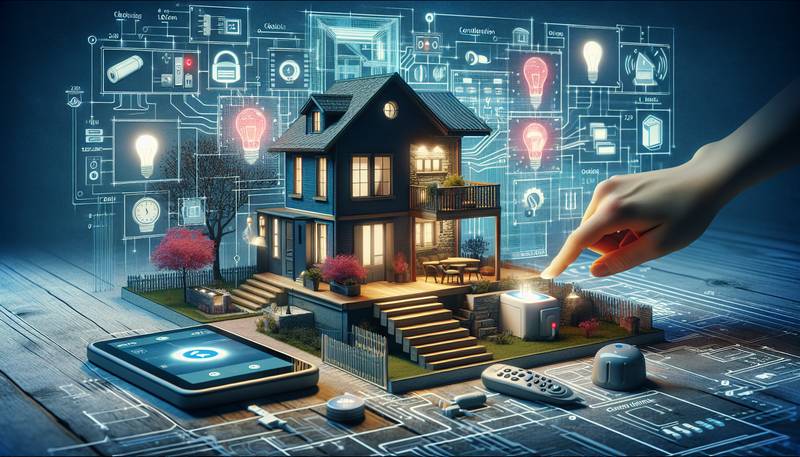Home Automation Systems: Key Electrical Considerations

Wiring WondersEvery home has its own wiring drama, much like a soap opera—full of twists, turns, and shocking revelations. When it comes to home automation, understanding the electrical wiring is essential. You might think you can just plug everything in and call it a day, but alas, that would be like trying to make a gourmet meal using only a microwave. First, know your circuits. It’s vital to ensure your wiring can handle the whims of modern automation without flipping its lid, or in this case, blowing a fuse. If you overload circuits the way we overload our schedules, you might find your smart home turning into a “not-so-smart” home in a matter of seconds.Power PlayAccess to consistent power is the heart of any automation system. Just like humans need coffee to function, smart devices crave electricity. Assess the power distribution across your home—no one likes roommates who hog the Wi-Fi, and the same goes for electrical outlets. For those who enjoy experimenting with home automation, it’s wise to ensure your devices play nice together. You wouldn’t want your lights dimming every time you crank up the thermostat. Think of it as a delicate dance—one wrong step, and you end up with a chaotically flickering disco ball instead of a chic ambiance.Device DilemmasSelecting the right devices is akin to choosing your wardrobe for a big event—you want to look good, but you also want to be comfortable (and maybe a little flashy). So, what's on the shopping list? - Smart lighting: Mood setters that won’t judge your Netflix choices.
- Smart thermostats: They can save you money and ensure you don’t turn your home into an icebox or a sauna.
- Smart locks: Because who wants to remember where they put their keys?
However, remember compatibility is key (pun intended). Devices that don’t speak the same language can lead to a miscommunication that would make any couple cringe. Always check for compatibility before going on a shopping spree; it’s an expensive mistake to discover your new gadgets are like cats and dogs—no harmony in sight.Network NeedsA robust Wi-Fi network is the supportive friend every home automation system needs. Imagine trying to throw a party while your Wi-Fi signal bounces around like a pinball—it's not a good look. The last thing you want is an unreliable connection that drops your smart fridge just when it’s about to send a reminder to restock on ice cream. Consider investing in a mesh Wi-Fi system if you live in a larger home. It’s like giving your Wi-Fi a fitness plan—allowing it to stretch its legs and reach every corner of your abode. And don't forget the importance of security; a secure home network is paramount. Nobody wants an unwanted guest crashing the party via your smart thermostat.Safety First, People!When it comes to home automation, being safety-conscious is crucial. It’s not just about having a smart home that can dim your lights or play your favorite tunes; it’s about ensuring that these devices don’t turn into little fire hazards. Inspect your electrical systems regularly, like a routine physical—but with an emphasis on wires, not cholesterol levels.Battery backups for critical systems are another must-have. If the power goes out and your home automation system is powered by pixie dust, you're in trouble. Consider having a backup plan—much like how every superhero has a sidekick, your systems should be prepared for any unexpected outages.Keep Your CoolRemember to keep the installation process cool and collected. Rushing this step is like trying to bake a cake in ten minutes—you might end up with a gooey mess instead of a delicious treat. Take your time to do the research, understand your needs, and if necessary, call in a professional to avoid any shocking surprises.In the end, setting up your home automation system is about creating a living space that works for you—where you can control everything with the swipe of a finger (or voice command). Embrace the technology, but don’t let it take control. After all, a well-automated home should be like a well-aged wine—smooth, pleasant, and just a little intoxicating. Cheers to a future where your toaster is smarter than your ex!
|
|







